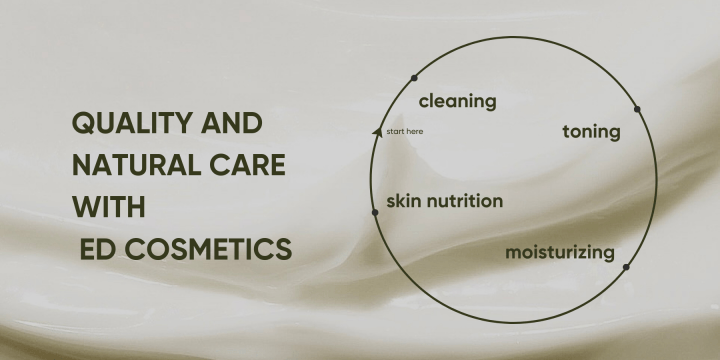How and When to Adjust Your Skincare Routine: Signals, Seasonal Changes, and Principles for Choosing Cosmetics
Maintaining healthy skin requires regular updates to your routine depending on your skin’s condition, environmental changes, and age-related factors. It’s common to hear different opinions about changing skincare — for example, that if a product worked before, there’s no need to replace it, or that if you don’t change cosmetics for a long time, the skin will “get used to it.”
Both are misconceptions, because the skin is a living organ that constantly adapts and reacts to external stimuli. As age, climate, hormones, and lifestyle change, so does the condition of our skin. And for this new, altered condition, we adjust our routine. For example, with age the natural production of collagen decreases, and the skin barrier weakens, so moisturizers and nourishing products that worked at 20 may not give the desired results at 45.
The key is recognizing real skin signals in time and adapting your routine accordingly. Let’s explore the main signs that your products are not working and how to properly adjust your skincare routine.
Clear and subtle signs that it’s time to change your skincare routine
Skin communicates its needs in different ways. Some signs are obvious, others less noticeable, but just as important.
Obvious signs (require immediate attention):
- Dryness, flakiness, tightness even after applying moisturizers, which may indicate a compromised skin barrier.
- Irritation, redness, itching, or breakouts — often symptoms of an allergic reaction to ingredients.
- Increased oiliness or more blackheads, especially if this reaction is new, which may indicate clogged pores or the wrong products.
Less obvious but important signs:
- Dull skin and lack of natural glow may indicate poor lifestyle habits or inconsistent skincare.
- Decreased elasticity, appearance of fine lines — signs of aging and the need for antioxidants and active ingredients.
- Changed sensations after applying familiar products: a cream leaves a film, or a serum absorbs too slowly — this indicates a change in skin condition.
- Appearance of unusual white bumps (milia), which signal excess or incorrect use of moisturizers.
Ignoring these signals worsens the skin’s condition and leads to the need for more complex correction.
Seasonal changes: how to adapt your skincare routine
Seasonal changes often affect the skin and require adjustment. In winter we face cold, wind, and dry indoor air due to heating, which weakens the skin barrier. During this season it’s recommended to add:
- hydrating and moisture-retaining ingredients (hyaluronic acid, glycerin)
- barrier-repairing components (ceramides)
- light oils and natural butters that nourish without heaviness
- hydrating serums
- creams with vitamins B3 and B5
ED Cosmetics, for example, offers a moisturizing face cream with the necessary ingredients. For additional hydration you can use multiple steps: hydrating serums, face masks, and creams with vitamins B3 and B5.
In winter, also focus on:
- sufficient hydration and soothing
- moderate use of active ingredients or pairing them with nourishing products if you use retinol or acids
- proper water temperature (avoid hot water)
- drinking enough water and healthy fats.
In summer, the skin needs lighter textures due to sun exposure and increased sebum production. ED Cosmetics SPF products have a lightweight formula that feels comfortable and does not leave greasiness. Sunscreens protect not only from UV radiation but also offer antioxidant benefits to maintain youthful skin.
Spring and autumn bring temperature fluctuations that often cause sensitivity, reactivity, and allergies. During these seasons, incorporate moderately hydrating textures and avoid allergenic ingredients.
How to rebuild your beauty routine or add new products
If you’re starting from scratch and don’t know what will be most effective, begin with a simple algorithm:
1 cleanser, 1 moisturizer, 1 sunscreen.
Skin often needs less than we think. Popular 7–10 step Korean routines are largely a result of mass consumption trends. If your basic routine works but you want radiance, clearer pores, or other targeted improvements — then you can expand further.
When your base works, add active ingredients gradually: one active at a time (acids, vitamin C, retinoids). This helps understand how your skin reacts and avoids irritation.
First results from a new routine may appear after 4–6 weeks of regular use. However, do not tolerate severe discomfort, redness, or pain — consult a dermatologist.
Tips for effective routine adaptation with ED Cosmetics products
ED Cosmetics offers lines tailored to different skin needs and seasonal changes. For a smooth routine update, start with the basics: cleansing, moisturizing, nourishing, and SPF. Also consider specific skin needs — aging, sensitivity, acne-prone conditions. To further improve the skin, you can try new lines with natural or active ingredients such as tamanu oil or caviar-based products.
It is important to give your skin time to adapt, introduce new products gradually, and combine products for maximum effect.








